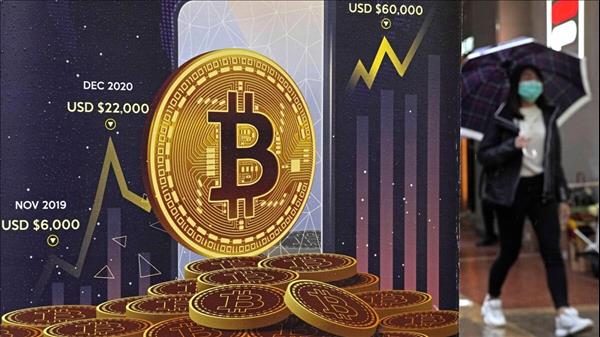(MENAFN- Khaleej Times) Markets this year are roiling, uncertainty abounds and the US government has had to step in to rescue two large American banks in recent days. So why is bitcoin, considered among the riskiest bets of them all, rising so fast? Just months ago, all forms of cryptocurrency appeared to be going up in flames, with bitcoin plunging from almost $50,000 at the start of 2022, to less than $17,000 when 2023 rolled around.
Bitcoin has since soared more than 60 per cent and it climbed another 8 per cent Friday above $27,000, all in an era of mass layoffs in the tech sector and widespread anxiety about stability in the US banking sector.
So what happened?
The pandemic was an era of massive growth for both technology companies and crypto. That surge began to wane in late 2021 as people began to travel, go out to restaurants or catch a show. They spent much less time in front of screens and at the same time, the government stimulus checks that allowed people some financial cushion began to run out. Crypto began to fall in tandem with technology. On top of that, in March 2022, the US Federal Reserve began an aggressive string of rate hikes, its most powerful weapon to fight inflation, which had begun to rise rapidly.
That put bitcoin prices in freefall. Higher interest rates mean that safe assets like Treasuries become more attractive to investors because their yields have increased, dulling the shine of high-growth companies and other assets that carry more risk. That includes bitcoin.
Yet economic data earlier this year seemed to suggest that inflation had peaked, raising the chance that the Fed would ease off on rate hikes, and that was the start of bitcoin's bounce.
How did the recent bank collapses play into all of this?
The collapse of Silicon Valley Bank and Signature Bank actually fuelled investments in bitcoin. In the eyes of Wall Street, a shaky financial system lowered the odds even further that the Fed could continue raising rates, as had been the prevailing expectation as recently as the start of last week, before Silicon Valley Bank blew up.
“As the economy heads towards a recession, the cryptoverse could look more attractive than equities,” wrote Edward Moya of Oanda in a research report.“It appears the downside risks are greater for the S&P 500 than they are for Bitcoin.”
If an investor on Jan. 1 put $100 into bitcoin and $100 in an S&P 500 index fund, the bitcoin investment would have returned $60, compared with a $2 return on the S&P bet.
So will bitcoin keep rising?
All eyes now turn to the Federal Reserve, which meets next week and will make a decision on what to do about its benchmark interest rate.
What the Fed does may not matter at all as far as bitcoin investors are concerned.
“Bitcoin is Dr. Jekyll and Mr. Hyde when it comes to how it reacts to Fed rate expectations,” Moya said.“For most of last year, higher Treasury yields alongside rising Fed rate hike expectations spelled trouble for Bitcoin. Fed rate cut bets are good news for cryptos, but a severe recession should prove troubling for all risky assets, including bitcoin.”




















Comments
No comment